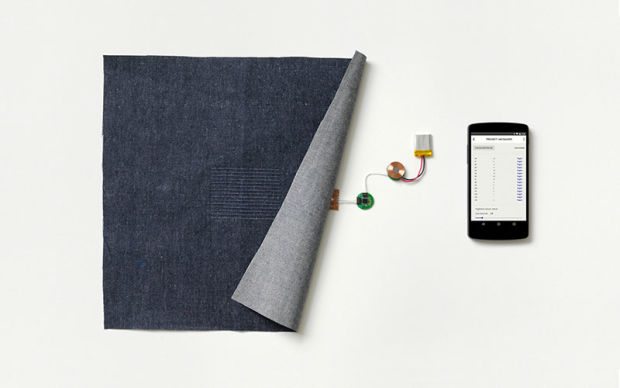
At the annual Google developer conference last week, the company announced that their Advanced Technology and Projects group (ATAP) developed a textile with digital sensing capabilities similar to that of a touchscreen, so in theory could be used to interact with electronic devices including phones. In order to make their vision a reality and bring this smart fabric (dubbed Jacquard) to market, Google partnered up with fellow San Francisco company Levi’s.
The innate structure of textiles is, in principle, the same as the structure of the touchscreens we use on everyday mobile devices. Therefore, if you just replace some of the threads in a given textile with conductive threads, you should be able to weave a textile that can recognize a variety of simple touch commands. If you can somehow add input and interactivity devices into the materials, you are on the way to making computers invisibly integrated into your apparel.
The challenge for Google to create the Jacquard yarn with Levi’s was to design something that was highly conductive but also scalable, meaning it can be made on industrial weaving machines anywhere in the world. Jacquard comes out thin and soft, looking much like normal fabric–the only difference is it’s conductive.
On the component side, Google is trying to shrink everything down to the size of a button. Ultimately the controls will be so small they can be embedded into the apparel manufacturing process. You won’t see them or feel them.
Soon you will be able to think of your apparel as just another user interface to your phone, computer, TV, or other technology. Simply tap your jacket sleeve to answer an incoming call, for example.
Smart fabrics are an interesting concept and I can’t wait to see what Google and Levi’s come up with–the first apparel product is scheduled for release sometime in 2016.

